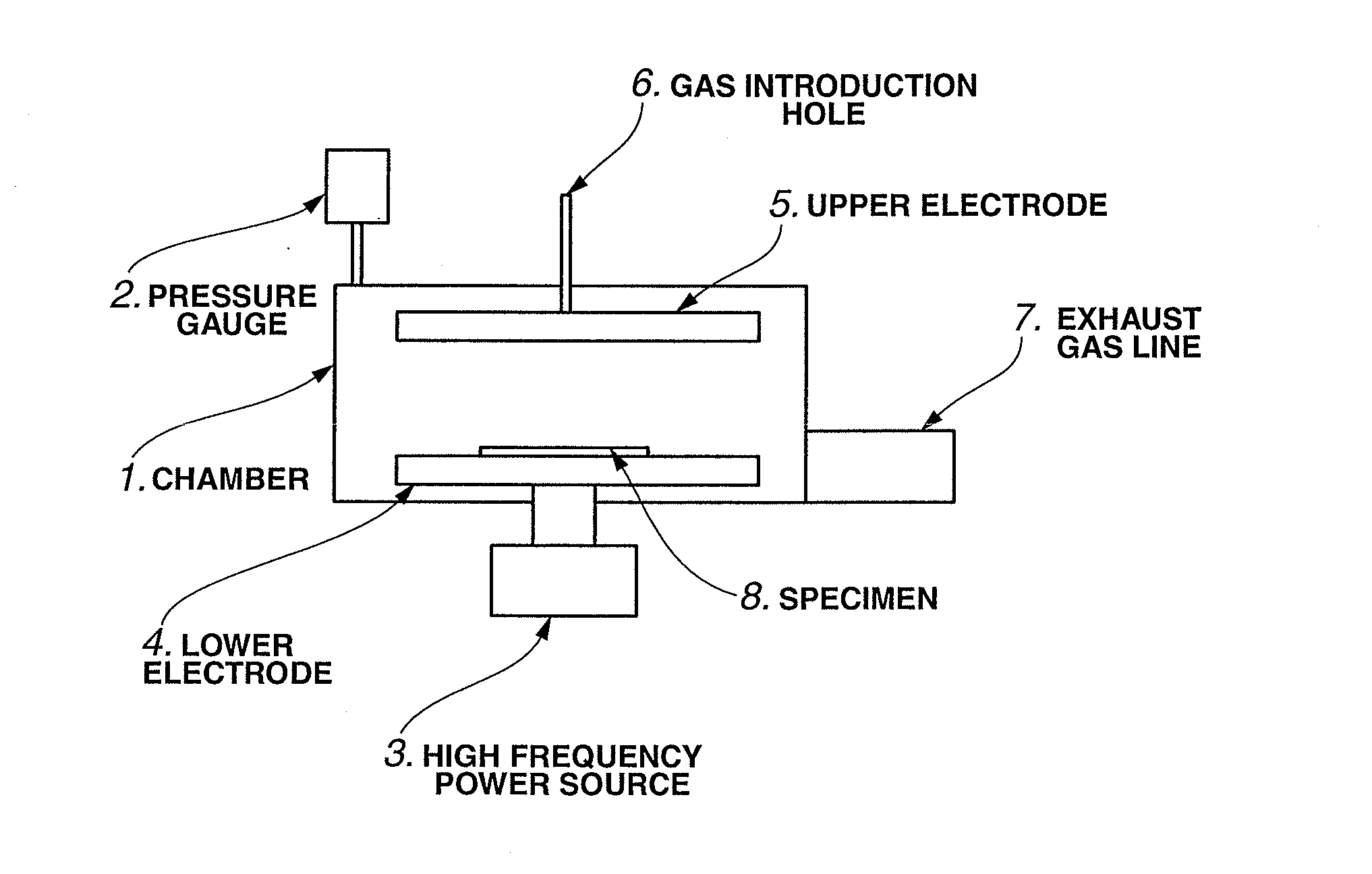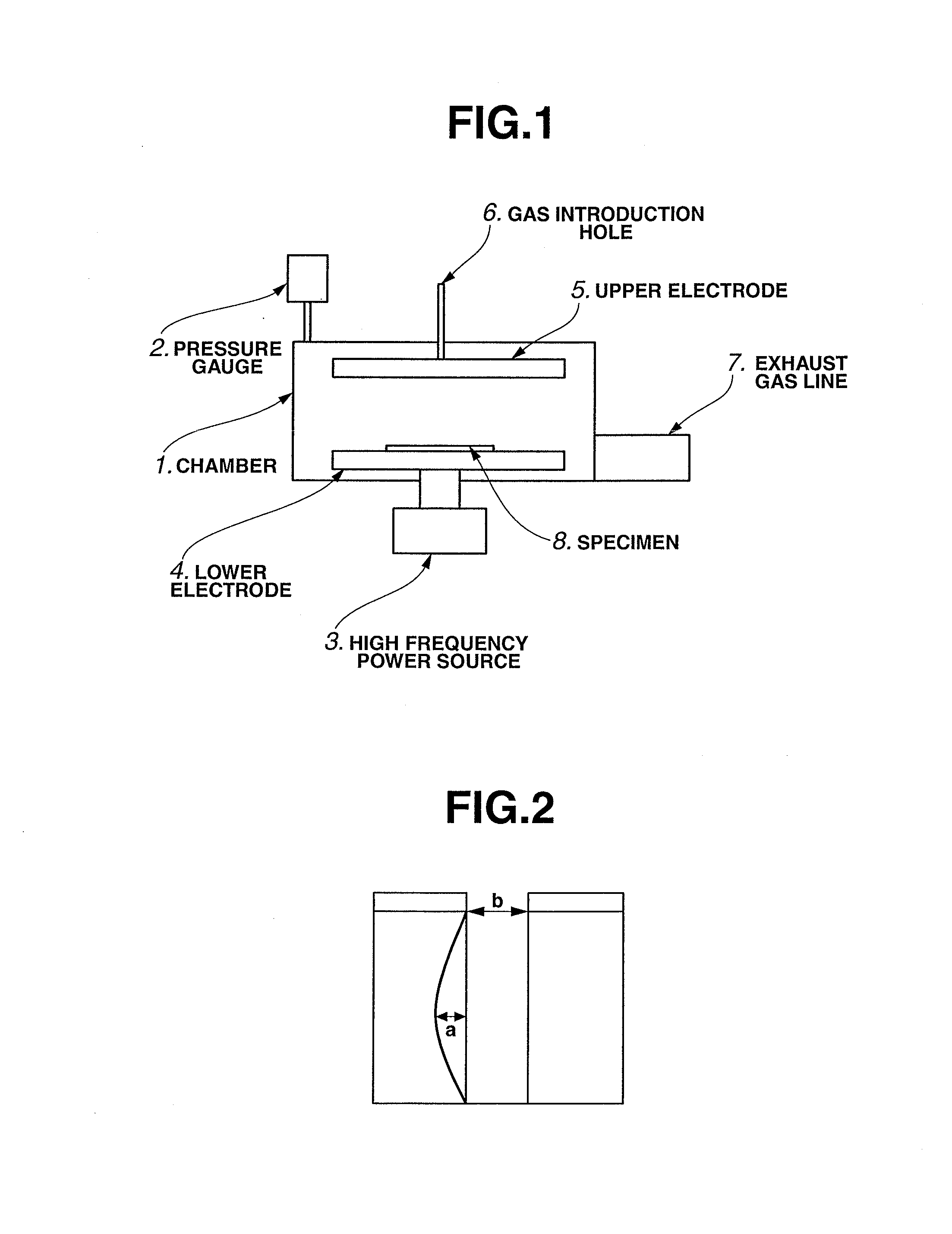Dry Etching Agent and Dry Etching Method
a technology of dry etching agent and dry etching method, which is applied in the direction of electrical equipment, chemical instruments and processes, organic chemistry, etc., can solve the problems of difficult production of alternative compounds, high gwp content of products, and inability to meet the requirements of high gwp, etc., to achieve efficient etching of silicon material layers, high etching rate, and high selectivity
- Summary
- Abstract
- Description
- Claims
- Application Information
AI Technical Summary
Benefits of technology
Problems solved by technology
Method used
Image
Examples
examples
[0081]The present invention will be described in more detail below by way of the following examples. It should be noted that these examples are illustrative and are not intended to limit the present invention thereto.
[0082]In Examples 1 to 10, the dry etching agent according to the present invention was applied for contact-hole processing to perform etching treatment on an interlayer dielectric film (SiO2) or a silicon nitride film. In comparison, etching treatment was performed using CF4 as a perfluorocarbon, F2 or C4F6 (CF2═CF—CF═CF2) as a diolefin in Comparative Examples 1 to 12.
[0083]FIG. 1 is a schematic view of an experimental device used in the respective examples.
[0084]In the experimental device, a process gas was introduced into a chamber 1 through a gas introduction hole 6 that was connected to an upper electrode 5 in the chamber 1. Subsequently, the pressure inside the chamber 1 was set to 2Pa. The process gas was then excited by means of a high frequency power source 3 (...
PUM
| Property | Measurement | Unit |
|---|---|---|
| Fraction | aaaaa | aaaaa |
| Percent by volume | aaaaa | aaaaa |
| Fraction | aaaaa | aaaaa |
Abstract
Description
Claims
Application Information
 Login to View More
Login to View More - R&D
- Intellectual Property
- Life Sciences
- Materials
- Tech Scout
- Unparalleled Data Quality
- Higher Quality Content
- 60% Fewer Hallucinations
Browse by: Latest US Patents, China's latest patents, Technical Efficacy Thesaurus, Application Domain, Technology Topic, Popular Technical Reports.
© 2025 PatSnap. All rights reserved.Legal|Privacy policy|Modern Slavery Act Transparency Statement|Sitemap|About US| Contact US: help@patsnap.com


